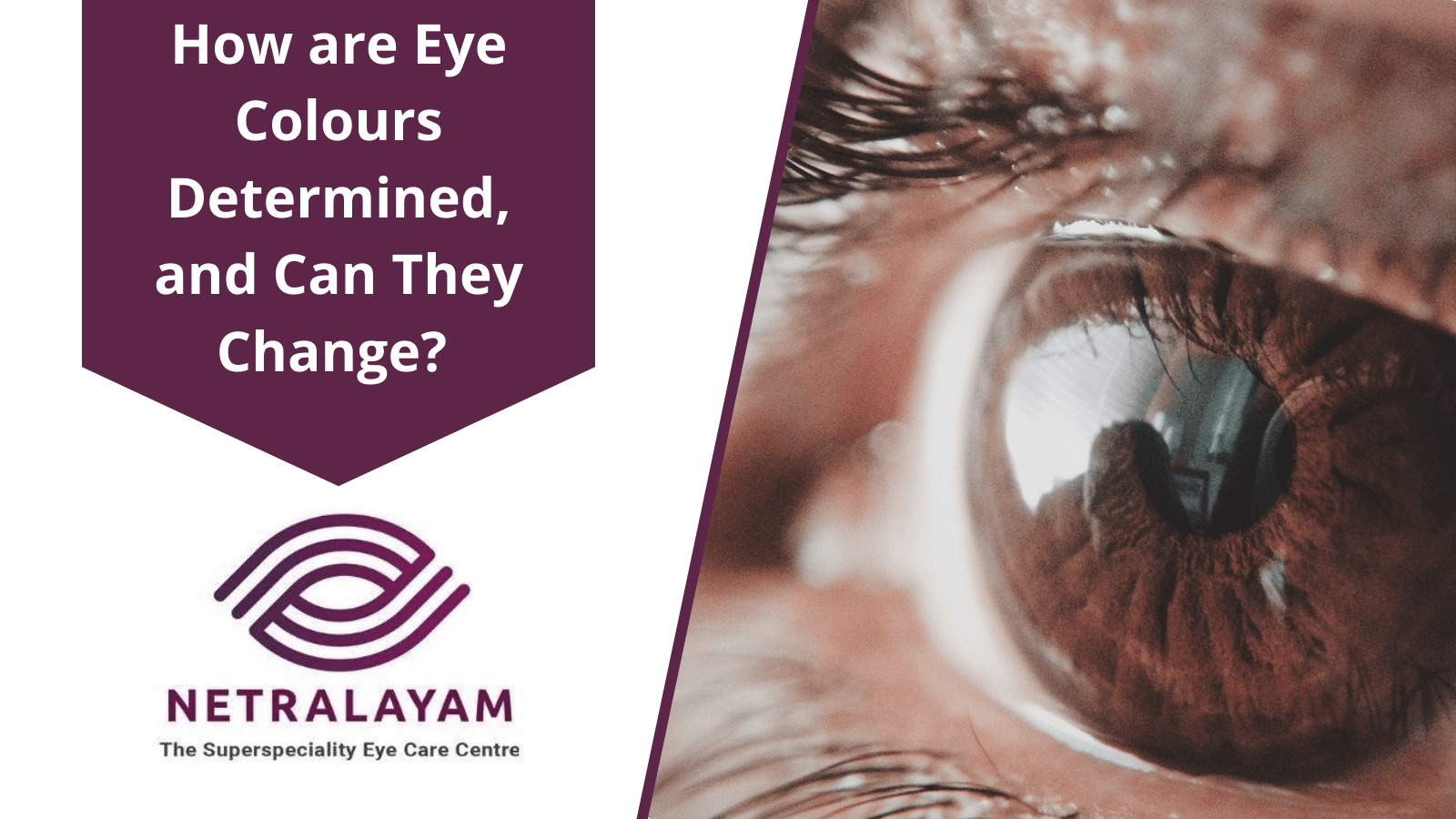Committed to Eye Care with Compassion, Technology and Competency
Committed to Eye Care with Compassion, Technology and Competency

9/28/2021
The personality of children, along with several of their physical features, depend on the genetic factors that each parent contributes to them. Often, eye colour is among the major genetic traits that attract the parents' attention as the child grows.
The inheritance of our eye colour is much more complex than we think because multiple genes are involved. While children’s eye colours can be predicted by the eye colours of their parents and other family members (relatives), variations in genetic material can produce surprising results in some cases.
According to recent statistics, a high percentage of the world’s population (70% to 79%) has brown eyes, with blue coming in a distant second place (8% to 10%), and the population with green eyes stands at third place (2%). 86% of the population in Scotland and Ireland have one of these colours (blue and green). However, the Albinos (1%) have red eyes due to the lack of pigmentation in their eyes that exposes the underlying blood vessels. 3% of the world population has grey eyes, 5% have amber eyes, 5% have hazel eyes, and some have two distinct colours in both eyes. This condition is called heterochromia.
Scientists previously believed that eye colour is determined by two eye colour genes (one from each parent). This was due to brown being dominant over blue (a blue-eyed individual would have two blue eye genes, and two blue-eyed individuals or parents could not have a brown-eyed child).
However, that does not always appear to be the case. The eye colour is determined by various genes that control the production of melanin in the iris. Melanin absorbs light, and when an object absorbs light, it appears dark. However, light reflects from the object when it doesn’t absorb light, and the object becomes the colour of the light it reflects. Hence, dark eyes have a lot of melanin, whereas light eyes have very little melanin in them.
Brown eyes have more melanin, followed by hazel eyes, which have less melanin than brown eyes but more melanin than green ones. Blue eyes have the least quantities of melanin. As a result, brown eyes absorb the highest light quantities and appear darker, whereas blue ones reflect the lowest light amounts and appear lighter.
Your eye colour can alter naturally due to the contraction and expansion of the iris in the presence of light. This also happens when the iris starts to age. While this alteration is a natural phenomenon, and few cosmetic accessories can allow for temporary changes, there is no safe way to permanently change the colour of the eyes.
Furthermore, there are two artificial ways to change the colour of the eyes, but as mentioned before, both options may have risks. These methods are described below:
Health problems that show up in eye colour
Some medical conditions impact your eye colour. However, instead of permanently altering the iris colour, they generally affect the cornea or whites of your eye. Some such conditions are described as follows:
See Also: How to Get Rid of Eye Pain? Possible Causes and Remedies
Related: What Leading Eye Specialists Have to Say About Your Eyes and Diabetes
If you face symptoms of any of the conditions mentioned above or wish to avail of the most effective eye care treatments from one of the best eye hospitals in Kolkata, schedule an appointment at Netralayam, the superspeciality eye care center. We comprise the most sophisticated medical infrastructure and a skilled team of eye specialists who can successfully treat most eye conditions.
Comments are closed
